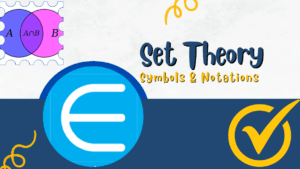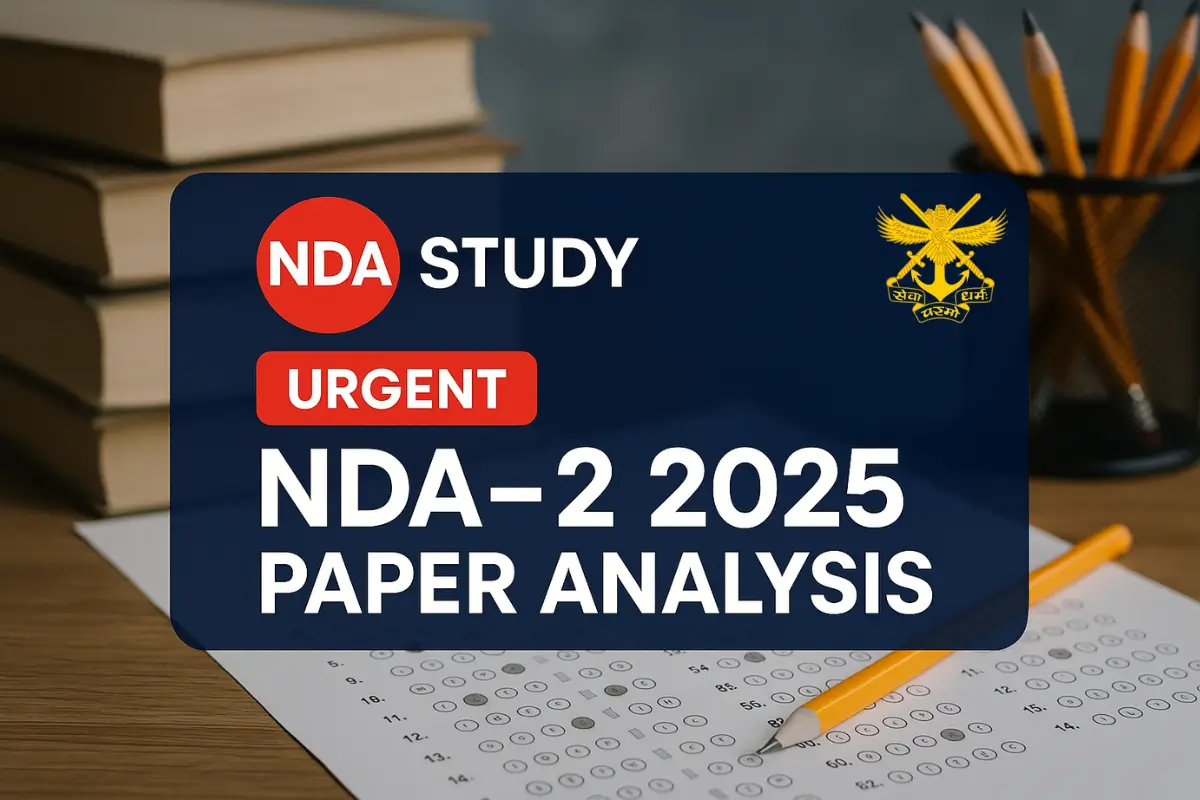Set theory : A set is a well-defined collection of objects/elements. What is a Set? Types of sets? How to represent a set? What is a Venn diagram? Benefits/applications of set theory? Etc. To get the answer to the following questions, go through the entire article. In our daily life, we often hear or speak about the collection of objects/elements of a particular kind, such as; A crowd of people, A football team, A pack of cards, and many more. This collection of objects or elements is termed a Set in Mathematics. The theory of set was developed by; a German Mathematician and Logician, George Cantor (1845-1918), and made it a separate mathematical discipline.
Table of Contents
Sets
Definition of Set theory :-
A set is a well-defined collection of objects/elements. It is always represented in capital letters. Examples of set theory are:
- The rivers of India
- The vowels in the English alphabet; a, e, i, o, u
- Prime factor of 420, namely, 2,3,5,7
- Even natural numbers, i.e., 2, 4, 6, 8, 10,….
- N : The set of all Natural numbers
- Z : The set of all integers
- Q : The set of all rational numbers
- R : The set of all real numbers
- Z+ : The set of all positive integers
- Q+ : The set of all positive rational numbers
- R+ : The set of positive real numbers Etc.
We can note that each of the above example is a well-defined collection of objects, it means all above examples are a set or particular objects or elements.
Important sign/symbol or notations of set
Basic Signs or Symbols of set theory :
- “∈” : read as “Belongs to” or “Contained in”
- “∉” : read as “Not belong to” “Not contained in”
- “:” : read as “Such that”
- “|” : read as “Such that”
- “,” : read as “and”
- “∃” : read as “There exists”
- “∀” : read as “For every” or “For all”
- “Ø” : symbol used for empty set
- “Δ” or “Delta” : used denote symmetric difference
- “U” or “AUB” : Used to denote Union of two sets and read as “A union B”
- “∩” or A∩B : symbol used for intersection and read as “A intersect B”
- “⊂” or “⊆” : Used to denote subset
- “⟹” ; mean “Implies”
Let’s take the above-given examples of Set “The River of India” as set A. Now as we know that the “Ganga” is an Indian river, it means “Ganga” comes under set A. In mathematics, it is written as Ganga∈A and read as “Ganga belongs to A ” or “Ganga contained in the sets A .” whereas “Nile” is not an Indian river; thus, it is written as Nile∉A and read as “Nile doesn’t belong to set A “
Set theory: Representation of sets
There are two methods of representing a set:
(1). Roster or tabular form: A method of representing a set In which the elements/objects are separated by commas and enclosed within braces{}. For example,
- The set of all even natural numbers less than ten (10) is written/described in roster form as {2,4,6,8}.
- The set of all vowels in the English alphabet is {a,e, I,o,u}.
NOTE :-
- In roster/tabular form, the order in which the objects/elements of a set are arranged/listed is Not Important(trivial/immaterial). Thus, the above can also be represented as {4,2,8,6} or {6,2,8,4} and {o,e, i, a,u}.
- In roster/tabular form, an element/object is not generally repeated; it means all the elements are written once in a set. For example, The Set of letters forming “MANNU” is written as {M, A, N, U} or {U, M, A, N}.
(2). Set-builder form: A method of representing a set, In which all the elements/objects must satisfy a property/rule to group under a Set. which should not be possessed by any other Elements/objects outside the given set. For example,
- A = {x:x is an even natural number less than 10}, read as “x is ‘such that’ x is an even natural number less than 10”. here “Even natural number less than 10” is a property/rule, which is possessed by element 2,4,6,8. Therefore the set will contain only these elements{2,4,6,8} or {8,4,2,6}.
- V = {x:x is a vowel in the English alphabet}, read as “x is ‘such that’ x is a vowel in the English alphabet” Vowel in the English alphabet is the property/rule. Which is possessed by elements a,e, i,o,u; Therefore, the set will contain only these elements{a,e, i,o,u} or {i,u,o,u, a}.
The cardinal number or Order of a set[set theory]
The Cardinality of a set means the number of elements in a Set or the number of Elements/objects contained in a given Set. the cardinal number ororder of a set Denoted by o(A), n(A), or |A|.
Examples are :
- A = {1,2,3,4,5,6,8}, the cardinality or order of the set A is= 7.
- B = {a,e, I,o,u}, the cardinality or order of the set B is= 5.
Types of sets [set theory]
(1). Empty set: A set that does not contain any elements is called the empty set. It is also called the void or the null set and represented by {} or Ø. For example,
- A = {x:x is a student presently studying in both classes 11 and 12}=Ø; we know that a student cannot study simultaneously in both classes 11 and 12.
- B = {x:6<x<8, x is a even natural number}, x∉B and 7 is not a even natural number.
- C = {x:x is an even prime number greater than 2}=Ø and 2 is only even prime number.
(2). Singleton set: A set that contains only one element or if the cardinality of a Set is one(1). For example,
- A = {x:x is an even prime number},i.e., |A|=1
- B = {x:20<x<28, x is a prime number}, i.e., o(B)=n(B)=|B|=1
NOTE:- Empty sets are not singleton sets, Because a singleton set contains one(1) element But, an empty set contains no elements or zero elements.
(3). Finite set: A set that is either an Empty set or contains a definite number of elements. For example,
- W = {x:x is the days of the week}.
- P = {x:x∈N and 2x-1=0}, |P|=0 or P is an empty set. Therefore it is a finite set.
(4). Infinite set: A Set that contains infinite elements/objects. For example,
- P: The set of all points on a line.
- N = {1,2,3,4,5,…..}
- Z = {…..,-3,-2,-1,0,1,2,3,…..}
(5). Equivalent sets: when the cardinal number of two Sets is the same. For example,
- A = {1,2,3} and B = {a, b, c}, Both the sets are equivalent set; n(A)=3=n(B).
- C = {t, a, n} and D = {a, n, t}; n(C)=3=n(D).
(6). Equal set: When the elements and the number of Elements or two Sets are the same. For example,
- C = {t, a, n} and D = {a, n, t}; C=D.
NOTE:-
- If two sets are not equal (i.e., let A ={a, n, d}), then they both are Unequal sets and written as A≠C
- Every equal set is equivalent, but every equivalent set may not be an Equal set, i.e., above set C and D is an Equal set, and their cardinal number is the same, so set C and D is also an equivalent set. Now if we take the example of Set A and B, |A|=3 and |B|=3; but, A = {1,2,3}≠{a, b, c}=B
(7). Subsets: Set A is a subset of B “iff” or if and only all the elements of Set A are also the elements of Set B or Contained in Set B. Symbol of a subset is ⊆ or ⊂.
- A = {all the cadets of NDA} and B = {all the cadets of the first semester of NDA}; B⊂A and read as B is a subset of A or Contained in A.
- C = {N,D,A} and D = {D,N,A}; C⊆D or D⊆C.
NOTE:-
- If Set C is a subset of D and Set D is a subset of C (C⊆D and D⊆C), Then Sets C and D are equal sets or C=D and vice-versa.
- Ø or {} is a subset of every set.
- Every set is a subset of itself.
- The number of subsets of A = 2n(A), where n(A) = Order/cardinality or number of elements in set A. Let set A = {1,2,3}; here n(A)=3 and 2n(A)= 23 = 8 are – {1},{2},{3},{1,2},{1,3},{2,3},{1,2,3},{}.
(8). Proper set and Superset: Let P and S be two sets. If P⊂S and P≠S, Then P is called a proper subset of S, and S is called a superset of P. Symbols of Proper set is ⊂ not ⊆. Examples are,
- A = {2,4,6,8,10} is proper subset of B ={1,2,3,4,5,6,7,8,9,10}.
- B = {1,2,3,4,5,6,7,8,9,10} is superset of C = {1,3,5,7,9}.
(9). Power set: The collection of all subsets of a Set is called the Power set of the set. Let A be a set, then the power set of A is denoted by P(A). In P(A), every element is a set. For example,
- if P(A)={1,2,3}, then P(A)={Ø,{1},{2},{3},{1,2},{1,3},{2,3},{1,2,3}} and n[P(A)]=2^3=8.
(10). Universal set: A set that contains every element of all the Sets under consideration, including some other Elements. (denoted by U). For example,
- A = {1,2,3}, B = {2,4,6,8} and C = {1,3,5,7,9}, therefore, U = {1,2,3,4,5,6,7,8,9}.
- [Types of sets in detail]
Set Theory: Intervals as subsets of Real Number R
Definition: A set that contains all Real numbers between given two numbers. Let’s assume the Real number line, and we have to choose numbers from a given interval; for that, we have some possibilities. For example, an Interval can either include an endpoint, both endpoints, or neither endpoints; and to differentiate among the intervals, we use symbolical representations or notation.
● Closed interval: The interval that includes endpoints. The inclusion of endpoints is denoted by square brackets []. For example, A={x:a≤x≤b}=[a,b]
● Open interval: The interval that excludes endpoints. The exclusion of endpoints is denoted by round brackets(). For example, B={x:a<x<b}=(a,b)
● We can also have intervals closed at one end and open at the other end, i.e.,
(i) [a,b)={x: a≤x<b} is an open interval from a to b, including a but excluding b.
(ii) (a,b]={x: a<x≤b} is an open interval from a to b, including a but excluding b.
Venn diagrams
It is a way to represent Sets. These diagrams consist of rectangles and closed curves, usually circles. The universal set is, Represented usually by a rectangle, and its subsets by Circles. [Venn diagrams]
Operations on Sets[Set Theory]
● Union of sets: It is a combined part of two sets. The symbol ‘U’ is used to denote the union. Symbolically we write (AUB)={x:x∈A or x∈B} and read as A union B. For example, A={1,2,3} and B={3,6,9,12}, AUB={1,2,3,6,9,12}.
● Intersection of sets: It is a common part of two sets. The symbol ‘∩’ is used to denote the intersection. Symbolically we write (A∩B)={x:x∈A and x∈B} and read as A intersects B. For example, A={1,2,3} and B={3,6,9,12}, A∩B={3}.
NOTE:- Disjoint set is A∩B=Ø
● Complement of sets: Let U be the universal set and M a subset of U. Then the complement of C is the set of all elements of U, which are not the elements of M. Symbolically, we write Mc or M’={x:x∈U and x∉C}
NOTE:- De Morgan’s Law: (i) (AUB)’=A’ ∩ B’ (ii) (A∩B)’=A’ U B’ [Read De Morgan’s Law in detail]
● Difference of sets: let’s consider the difference between the two given sets, A and B. Then, the difference between both sets is the elements that belong to A but not B. Symbolically we write A-B={x:x∈A and x∈B} and read as A minus B. For example, A={1,2,3,4,5,6} and B={1,3,5}, A-B={2,4,6}.
● Symmetric difference: It is the union of the difference of two sets. Let A and B be two sets, then the symmetric difference between A and B is denoted by Δ. Symbolically we write AΔB=(A-B)U(B-A).
NOTE:- AΔB=(A-B)U(B-A)=AUB-A∩B.(Explanation)
Some Important Formulas/properties of Set Theory
● Number of subsets of a power set or n[p(A)]= 2^m, where m=n(A) or Cardinality of set A.
● Some properties of the operation of Union
- AUB=BUA [Commutative law]
- (AUB)UC=AU(BUC) [Associative law]
- AUØ=A [Law of identity element, Ø is the identity of U]
- AUA=A [Idempotent law]
- UUA=U [Law of U]
● Some properties of the operation of the Intersection
- A∩B=B∩A [Commutative law]
- (A∩B)∩C=A∩(B∩C) [Associative law]
- Ø∩A=Ø, U∩A=A [Law of Ø and U]
- AØ∩A=A [Idempotent law]
- A∩(B∩C)=(A∩B)U(A∩C) [Distributive law] i.e., ∩ distributes over U
● Some properties of complement sets
- Complement laws: (i) AUA’=U (ii) A∩A= Ø
- De Morgan’s law: (i) (AUB)’=A’∩B’ (ii) (A∩B)’=A’UB’
- Law of double complementation: (A’)’=A
- Laws of empty set and universal set: Ø’=U and U’= Ø
● Some other formulas
(i) If A and B are finite sets such that A∩B=Ø, then
- n(AUB)=n(A)+n(B)
(ii) If A∩B≠Ø, then
- n(AUB)=n(A)+n(B)-n(A∩B)
NOTE:-(i) AUB=A+B-(A∩B) (ii) n(AUB)=n(A)+n(B)-n(A∩B)
Explore : – NDA previous year questions or Chapter-wise PYQ of set theory (Inactive)
%20(1).png)
-min%20(2).png)
.png)
%20(1).png)
%20(1).png)
%20(1).png)








